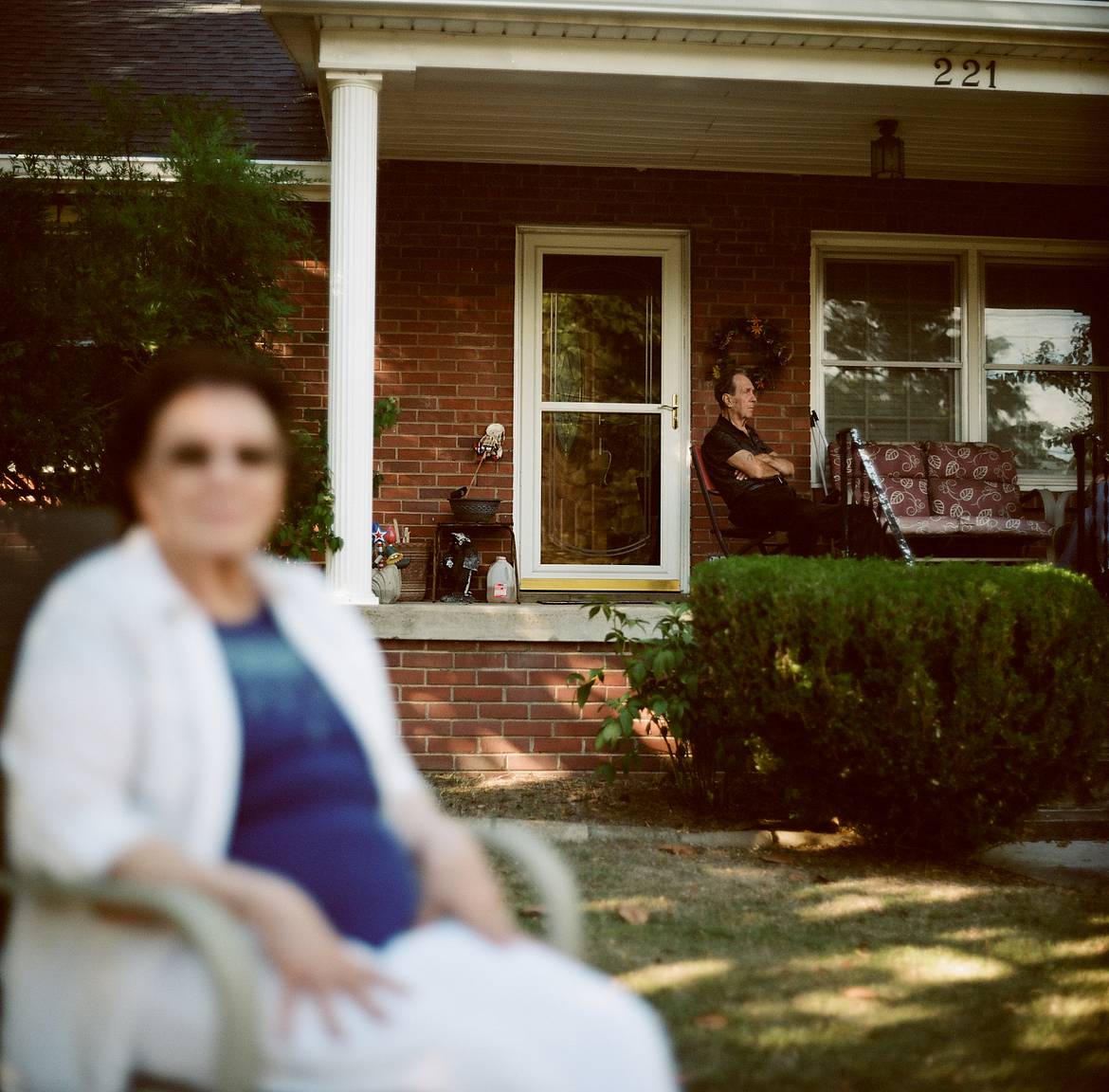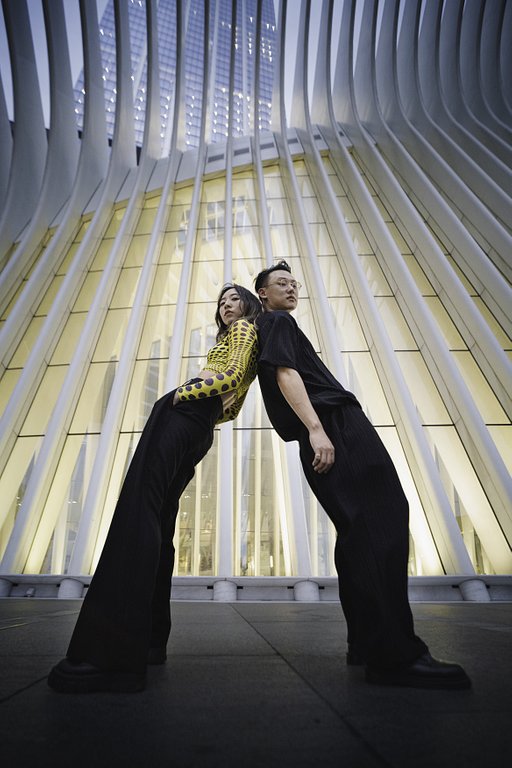George Oeser on Experimenting with the Boundaries of Everyday Photography
6 16 Share TweetCommunity member George Oeser, also known by his LomoHome @gaypunk, is a veteran Lomographer who first discovered Lomography from a news article that he read about our founders back in the '90s. Having toted a camera around with him for as long as he can remember, George's current work focuses on bending the typical rules of photography, in perfect Lomographic fashion, in order to create photographs with more depth to them.
We had the opportunity to chat with George about his work and process. So, without further ado, let's hear what the longtime Lomographer has to share with the community!
Hi George, welcome to Lomography Magazine! Can you start off by telling us a bit about yourself and your work?
I was born and raised in the Nashville, Tennessee area and still live there to this day, though I have also lived in Seattle Washington and in Tilburg, the Netherlands. For as long as I can remember I have had a camera in my hands. As a kid in the 1970s and early 1980s it was normally whatever 110 camera my mother owned at the time, as my father wouldn’t let me use his 35 mm SLR out of fear I would break it. As I got older my collection of cameras grew.
My early photos were mostly bad snapshots, but I paid attention to what I liked and what I didn’t like in my photos so that I could produce more that I liked. I’ve had no formal training, but I did learn the rules of photography. However, so many of the early photos I took and loved didn’t fit into those rules, so I decided to skirt along the edges of the rules. I guess you might say my work is about making poor quality photographs.
How did you discover Lomography?
At some point in the 1990s I read an article about a group of students from Austria traveling on holiday to Russia. While there they discovered a Russian camera called the Lomo LC-A which often produced images similar to the ones I liked from my childhood. I had to have one and so I searched the internet and found a Lomo LC-A being sold by a person in Russia and immediately ordered it. It came to me brand new in a plastic box with instructions in Russian, and I started snapping away with it. I still have that camera today.
When I moved to Europe, I had the chance to actually visit a Lomography store and started using Lomography’s lab in Amsterdam to process my film. This is when I also got involved with uploading my photos to the Lomography website. I was already a photographer, but suddenly I was a Lomographer as well!
What is your favorite aspect of uploading to your LomoHome?
I love being able to share my photos with others who aren’t as likely to be looking for technical perfection, who can understand the beauty in mistakes and experimentation, and who are willing to share their mistakes and experimentation with the rest of us as well. Of course I love it when others like and comment on my photos. I’m pretty shallow and need the validation from time to time.
Do you have a favorite Lomography product?
At the moment I am really enjoying the LomoChrome Turquoise film. I have shot a few rolls of 110, 120, and 35 mm and the results have been really wonderful and surprising. It produces images that range from surreal to melancholy, but until I see the photo I never know which one it will be!
What's your usual camera kit?
There is no usual for me. I shoot a lot of 110 with a couple of higher end 110 cameras, quite a bit of 35 mm with an old Praktica MTL 50 and a few different lenses, as well as a Nikon F5 with a variety of lenses. Plus I work with 120 film using an ancient Graflex Norita 66 with an amazing 60 mm f/2 lens that gives me remarkably shallow depth of field.
I also use a Holga 120N quite a bit. I love experimenting with that camera, using colored and close up filters to do macro shots. It is probably my favorite, though of course it is also the most challenging.
You have a few different series of photos. Which of these series is your favorite?
There is no way to give a simple answer to this question, all of them are so different and give me a chance to do different things. The floral images give me an opportunity to make something beautiful, but not in a traditional way. Shooting colorful flowers in black and white so the texture of the flower becomes the focus, keeping the focus super soft so the shapes and forms draw you in. I try to make the images beautiful but not in the way we normally expect. The Shallow series lets me play around with what the subject of a photo is. It allows me to pose questions about what it is we look at in a photo. It allows me to tell a story, but a story with a narrative of uncertainties and doubt.
My newest images are about some of the limits of photography. I ask myself from time to time if photography has become a bit exhausted. Can we do something new with photography, and if we can, how? So, I decided to edit my prints after they are printed. I am turning my photos into something that isn’t two dimensional. I am working to turn my photos into something more sculptural and I have a thousand ideas in my head that I am currently trying to get out of my head and into a physical form. Because the ideas are streaming in so quickly for this series and because these are my newest work I am probably most excited about these images. But I love them all.
What was the process of shooting/creating the photos for the newest series like?
The process isn’t really a process as we commonly think about it. All of the pieces I have done so far have been made with photos I took with no idea I would be doing the odd and strange things I have done to them. Therefore, the actual photographic part of the process is fairly dull and ordinary. What is different, and I suppose this is what the process really is, is diving deep into thinking about how to do what it is I want to do. I want to create images that aren’t limited by being a two dimensional form. I want to make three dimensional objects that don’t rely on tricking the eye to get there. I want to make something that has never or almost never been done before. This makes the process a bit vague.
There are no books or websites I can read to find out how to do what I am doing. Truthfully, I haven’t even been able to find other works that are similar, so all of this is coming straight out of my head. I toss around and throw out countless ideas and plans of how to turn these images into something with actual form and texture, then I start over again when I realize that I don’t have the skills or equipment to do some of the things I want to do. Of course, all artists face limitations and these limitations can serve as a way to make our art better. All of this leads me to ideas that are possible and that will produce the final product that I am trying to reach.
Do you have a favorite shot from that series? Is there a story behind it?
As with trying to pick my favorite series out of the three I guess it would come back to being the most excited about the last image I made. “Analog Pixels 21” is a photo of an aluminum Coca-Cola bottle I shot on LomoChrome Turquoise film several months ago. I had already done a few other images using a technique I have been developing where I print two copies of the same image and then cut one into strips while cutting slices into the other copy. I then physically weave the strips through the slices by hand, a somewhat long and tedious process. I then wind up with an image that has a distinctive texture, and that produces varied and different reflections coming from the woven surface. The strips of the image never line up perfectly with the image they are woven into and this gives a very abstract but still recognizable quality to the image that I find fascinating and beautiful. I never know how one of these is going to turn out until it is finished as I have very limited control on how everything will line up, but so far I have been thrilled with the results and I can’t wait to produce more.
Do you have any upcoming projects that you can share with us?
I have so many ideas in my brain right now. I will be continuing to work on more three dimensional images involving paper, canvas, and metal in hopes of producing forms and images that are well removed from what we normally expect from photography. I hope anyone seeing them will be as excited and confused by them as I am!
Anything else you'd like to share?
I would encourage my fellow Lomographers to experiment, find ways to work around your limitations, do your own thing and avoid trying to emulate others. Be brave with your photography and work hard to make photos you love. What other people think is secondary to what you think.
If you're interested in keeping up with George and his work, don't forget to check out his LomoHome, Instagram, and website!
written by eloffreno on 2023-05-22 #culture #people #experimental #lomohome #community #community-member







































6 Comments